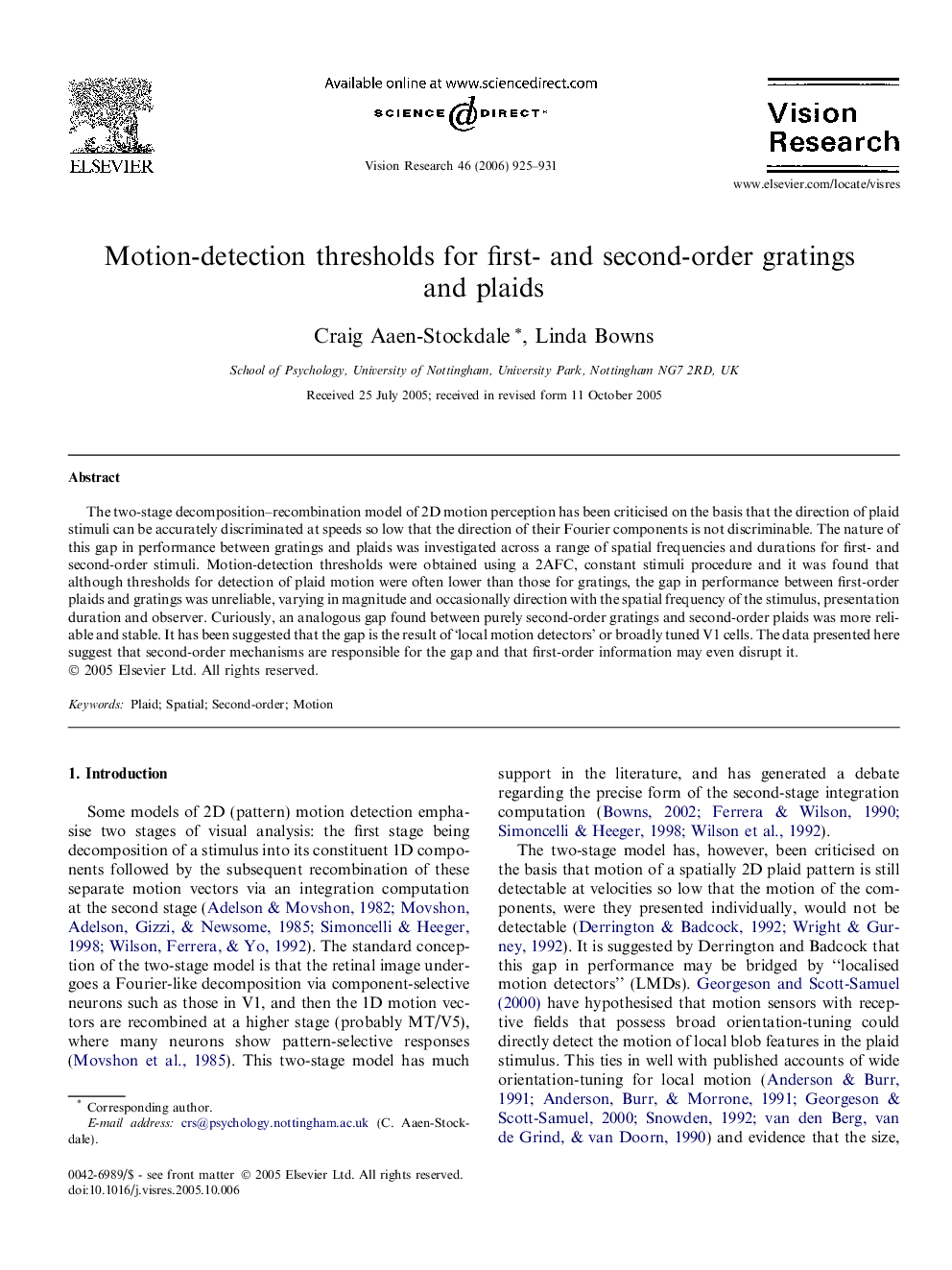| Article ID | Journal | Published Year | Pages | File Type |
|---|---|---|---|---|
| 4036350 | Vision Research | 2006 | 7 Pages |
The two-stage decomposition–recombination model of 2D motion perception has been criticised on the basis that the direction of plaid stimuli can be accurately discriminated at speeds so low that the direction of their Fourier components is not discriminable. The nature of this gap in performance between gratings and plaids was investigated across a range of spatial frequencies and durations for first- and second-order stimuli. Motion-detection thresholds were obtained using a 2AFC, constant stimuli procedure and it was found that although thresholds for detection of plaid motion were often lower than those for gratings, the gap in performance between first-order plaids and gratings was unreliable, varying in magnitude and occasionally direction with the spatial frequency of the stimulus, presentation duration and observer. Curiously, an analogous gap found between purely second-order gratings and second-order plaids was more reliable and stable. It has been suggested that the gap is the result of ‘local motion detectors’ or broadly tuned V1 cells. The data presented here suggest that second-order mechanisms are responsible for the gap and that first-order information may even disrupt it.
